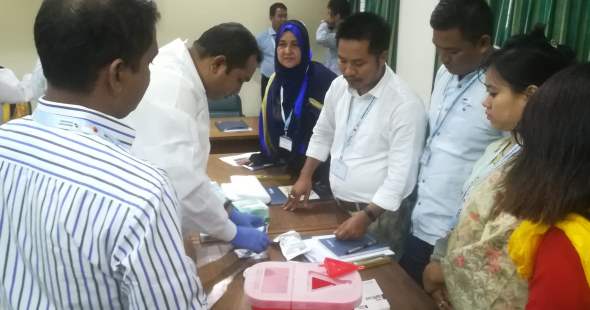Healthy markets

GOAL: Shape sustainable markets for quality-assured and affordable diagnostics
New diagnostic tests must overcome multiple “valleys of death” on the road from R&D to delivery, any one of which can prevent them from becoming viable products ready for use by those who need them. If test developers do not see the need for a new diagnostic or do not have an indication of the potential return on their investment, R&D may never get started. Similarly, if manufacturers do not see a viable market, then investment in manufacturing is at risk – especially investment in the high costs of automation, which can often be how a product becomes affordable to the end user. Policy makers depend on reliable evidence to be able to support new innovations, which is generated from robust clinical trials that also need investment. The complex, multi-faceted process of procurement across the public and private sectors involves registration, forecasting, supply chain management and health systems strengthening to support delivery. Distributors often need to assume significant risks, such as payment delays from buyers and foreign exchange rates, as well as the high cost of capital, which can lead to significant mark-ups that render a test unaffordable. Engaging suitable delivery channels across public and private sector hospitals, laboratories and pharmacies can result in long lead times in development of standard procedures, and supportive policy frameworks.
Our focus is on identifying opportunities to engage stakeholders and find solutions to unblock bottlenecks along this continuum and create a viable, efficient and sustainable market environment, so that new innovations can reach those who need them without delays.
Workstreams:
- Provide market intelligence that improves data and information transparency for both supply and demand, and meets the needs of buyers and sellers
- Work with partners to devise and implement tailored market interventions across the continuum
Indicative deliverables:
- Functional market intelligence data and reports to inform appropriate interventions on both demand and supply (targeting 1 per test identified in the R&D portfolio)
- Access to capital (grants or forgivable loans) facilitated for assay developers, manufacturers and distributors to support the business case and ensure affordability for a new diagnostic with at least 1 “exemplar” arrangement coordinated
- Volume commitment-linked access terms, negotiated for at least 1 new diagnostic (e.g. volume guarantee, advanced market commitment)
- Evidence from at least 7 countries for 3–4 innovative delivery channels engaged in the public health response, while decentralizing access to new diagnostics
- Digital marketplace to connect buyers (including workplaces, industry or private sector healthcare providers without access to existing procurement portals, such as Wambo) and suppliers to facilitate and aggregate procurement

